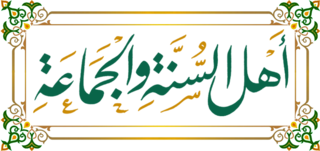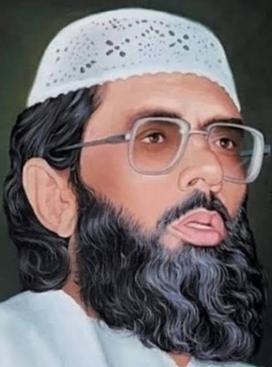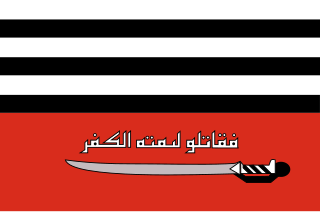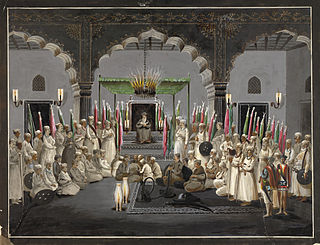
Ashura is a day of commemoration in Islam. It occurs annually on the tenth of Muharram, the first month of the Islamic calendar. For Sunni Muslims, Ashura marks the parting of the Red Sea by Moses and the salvation of the Israelites. Also on this day, Noah disembarked from the Ark, God forgave Adam, and Joseph was released from prison, among various other auspicious events on Ashura in Sunni tradition. Ashura is celebrated in Sunni Islam through supererogatory fasting and other acceptable expressions of joy. In some Sunni communities, the annual Ashura festivities include carnivals, bonfires, and special dishes, even though some Sunni scholars have criticized such practices.

Islam is the largest and the state religion of the Islamic Republic of Pakistan. Pakistan has over 240 Million adherents of Islam. As much as 90% of the population follows Sunni Islam. Most Pakistani Sunni Muslims belong to the Hanafi school of jurisprudence, which is represented by the Barelvi and Deobandi traditions.

The Barelvi movement, also known as Ahl al-Sunnah wa'l-Jamaah is a Sunni revivalist movement following the Hanafi and Shafi'i schools of jurisprudence, and Maturidi and Ashʿari schools of theology with strong Sufi influences and with hundreds of millions of followers. It is moderate form of Islam that Muslims in south Asia have followed for centuries and it encompasses a variety of Sufi orders, including the Chistis, Qadiris, Soharwardis and Naqshbandis as well as many other orders and sub-orders of Sufism. They consider themselves to be the continuation of Sunni Islamic orthodoxy before the rise of Salafism and Deobandi Movement.

The Sipah-e-Sahaba (SS), also known as the Millat-e-Islamiyya (MI), is a Sunni Islamist organisation in Pakistan. Founded by Pakistani cleric Haq Nawaz Jhangvi in 1989 after breaking away from Sunni Deobandi party Jamiat Ulema-e-Islam (F), it was based in Jhang, Punjab, but had offices in all of Pakistan's provinces and territories. It operated as a federal and provincial political party until it was banned and outlawed as a terrorist organization by Pakistani president Pervez Musharraf in 2002 Though it has been banned by the Pakistani government on numerous occasions, the Sipah-e-Sahaba has continued to operate under a different name throughout the country; it has significant underground support in Punjab and Khyber Pakhtunkhwa. The organization was also banned by the United Kingdom, where there is a significant Pakistani diaspora population, in 2001.
Sectarian violence in Pakistan refers to violence directed against people and places in Pakistan motivated by antagonism toward the target's religious sect. As many as 4,000 Shia are estimated to have been killed in sectarian attacks in Pakistan between 1987 and 2007, and thousands more Shia have been killed by Sunni extremists from 2008 to 2014, according to Human Rights Watch (HRW). Sunni Deobandis and Barelvis have also suffered from some sectarian violence, with attacks on religious shrines killing hundreds of worshippers, and some Deobandi leaders assassinated. Pakistan minority religious groups, including Hindus, Ahmadis, and Christians, have "faced unprecedented insecurity and persecution" in at least two recent years, according to Human Rights Watch. One significant aspect of the attacks in Pakistan is that militants often target their victims places of worship during prayers or religious services in order to maximize fatalities and to "emphasize the religious dimensions of their attack".

Haq Nawaz Jhangvi was a Pakistani cleric who founded the Sipah-e-Sahaba Pakistan, a Sunni Deobandi group known for its anti-Shia thoughts, on 6 September 1986.

Sipah-e-Muhammad Pakistan (S.M.P) was a Shia organisation and a former political party in Pakistan that was formed in 1993 by Allama Mureed Abbas Yazdani and now after his shahdat and long period of time again his nephew Malik Muhammad Wasi Ul Baqar is looking forward to take responsibility of running Sipah-e-Muhammad Pakistan
Shia Islam was brought to the Indian subcontinent during the final years of the Rashidun Caliphate. The Indian subcontinent also served as a refuge for some Shias escaping persecution from Umayyads, Abbasids, Ayyubids, and Ottomans. The immigration continued throughout the second millennium until the formation of modern nation states. Shi'ism also won converts among the local population.

The Lashkar-e-Jhangvi was a Deobandi supremacist, terrorist and Jihadist militant organisation based in Afghanistan. The organisation operates in Pakistan and Afghanistan and is an offshoot of anti-Shia party Sipah-e-Sahaba Pakistan (SSP). The LeJ was founded by former SSP activists Riaz Basra, Malik Ishaq, Akram Lahori, and Ghulam Rasool Shah.

The 2009 Karachi bombing or Ashura attack took place on 28 December 2009 inside a Shia procession commemorating the day of Ashura, at Muhammad Ali Jinnah Road, Karachi. Ashura is the holiest of days for followers of Shia Islam and marks the anniversary of the death of Hussain, grandson of the Islamic prophet Muhammad, who was killed at the battle of Karbala in 680. At least 30 people were initially reported to have been killed, later figures revealed even more deaths while dozens were left injured in the wake of the attack. The attacker marched amongst the procession with tens of thousands of people attending the march. There is some speculation amongst officials as to whether the nature of the blast was that of a suicide attack or a remotely detonated or planted bomb.

The February 2010 Karachi bombings were a series of two bombings in Karachi in Pakistan on 5 February 2010. At least 25 people died and more than 50 were injured. The attacks which targeted Shia Muslims happened on Arba'een, a religious observation that occurs 40 days after the Day of Ashura.
This is a list of terrorist incidents in Pakistan in 2004.
This is a list of terrorist incidents in Pakistan in 2005.

Azadari in Lucknow or Mourning in Lucknow, is name of the practices related to mourning and commemoration of the anniversary of the death of Imam Husayn ibn Ali at the Battle of Karbala in 680, particularly in period of Muharram and in general round the year.

Anti-Shi'ism is hatred of, prejudice against, discrimination against, persecution of, and violence against Shia Muslims because of their religious beliefs, traditions, and cultural heritage. The term was first used by Shia Rights Watch in 2011, but it has been used in informal research and written in scholarly articles for decades.

The 1988 Gilgit massacre refers to the state-sponsored mass killing of Shia civilians in the Gilgit District of Pakistan who revolted against military dictator Zia-ul-Haq's Sunni Islamist regime, responsible for vehement persecution of religious minorities as part of its Islamization program.

Malik Ishaq was a Pakistani militant, and leader and co-founder of the globally designated Lashkar-e-Jhangvi (LeJ).
On 24 November 2012, the day of Ashura, an explosion took place in Dera Ismail Khan, Pakistan on the crowd of Shiite who were mourning according to their ideology. Ashura is the holiest of days for followers of Shia Islam and marks the anniversary of the martyrdom of Hussain, grandson of the Islamic prophet Muhammad, who was martyred at the battle of Karbala in 680. 8 people were killed while more than 80 people were injured.
History of Shi'ism in Kashmir is marked with conflict and strife, spanning over half a millennium. Incidents of sectarian violence occurred in Kashmir under the rule of Mirza Haider Dughlat, followed by the Mughals (1586–1752), the Afghans (1752–1819), the Sikhs (1819–1845) and the Dogras (1846–1947). A small Shia community has managed to survive in Kashmir till today. The shias comprise about 25-30% of the Kashmir's total population and live mostly in North and Central Kashmir. There are also many shia communities in South kashmir.
The Madhe Sahaba Agitation was a civil disobedience movement launched by Deobandi Muslims of Lucknow in the first half of the twentieth century to counter the commemoration of the tragedy of Karbala during Muharram. It resulted in a widespread Shia-Sunni conflict between the years 1906 – 1909 and turned violent in 1936 – 1939. The conflict spread to other parts of British India.













